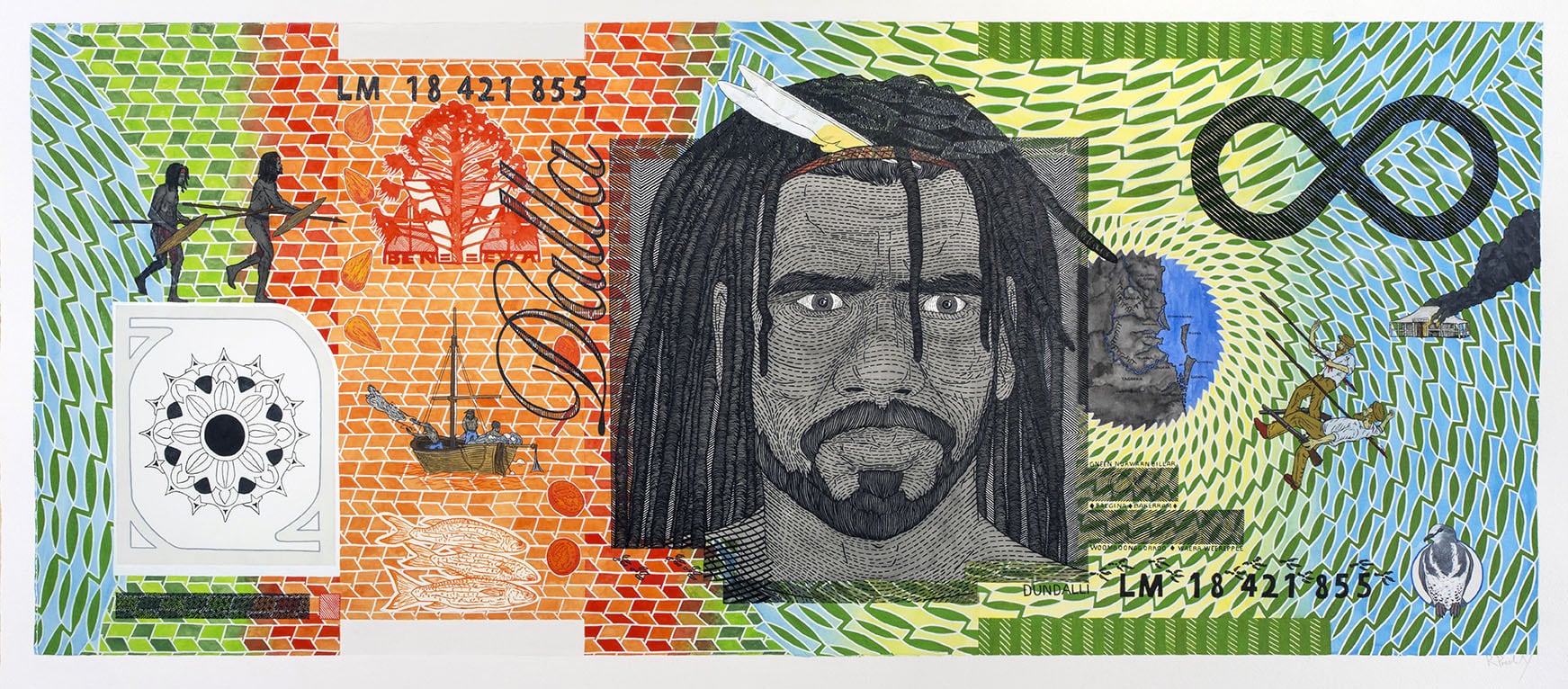
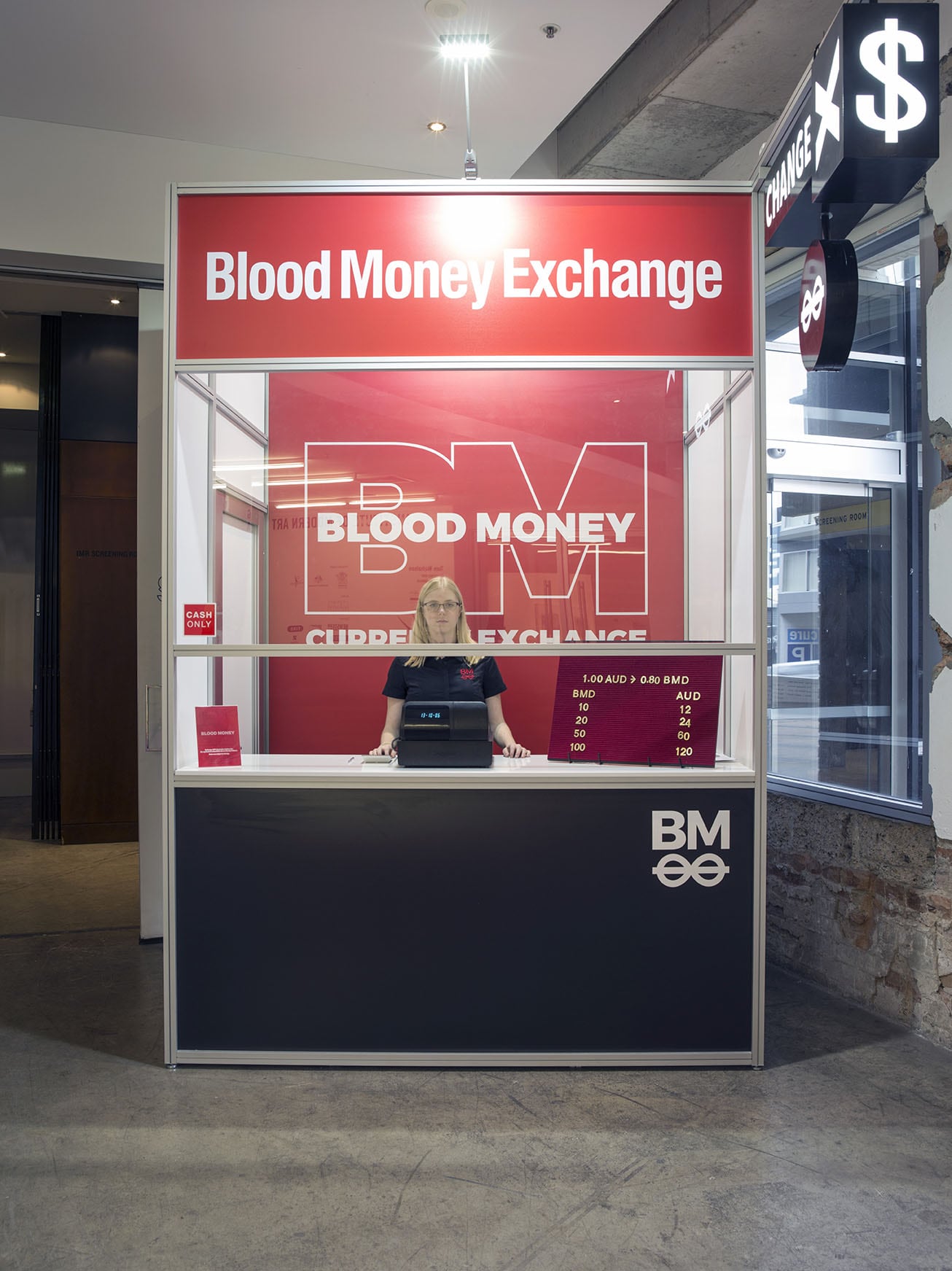
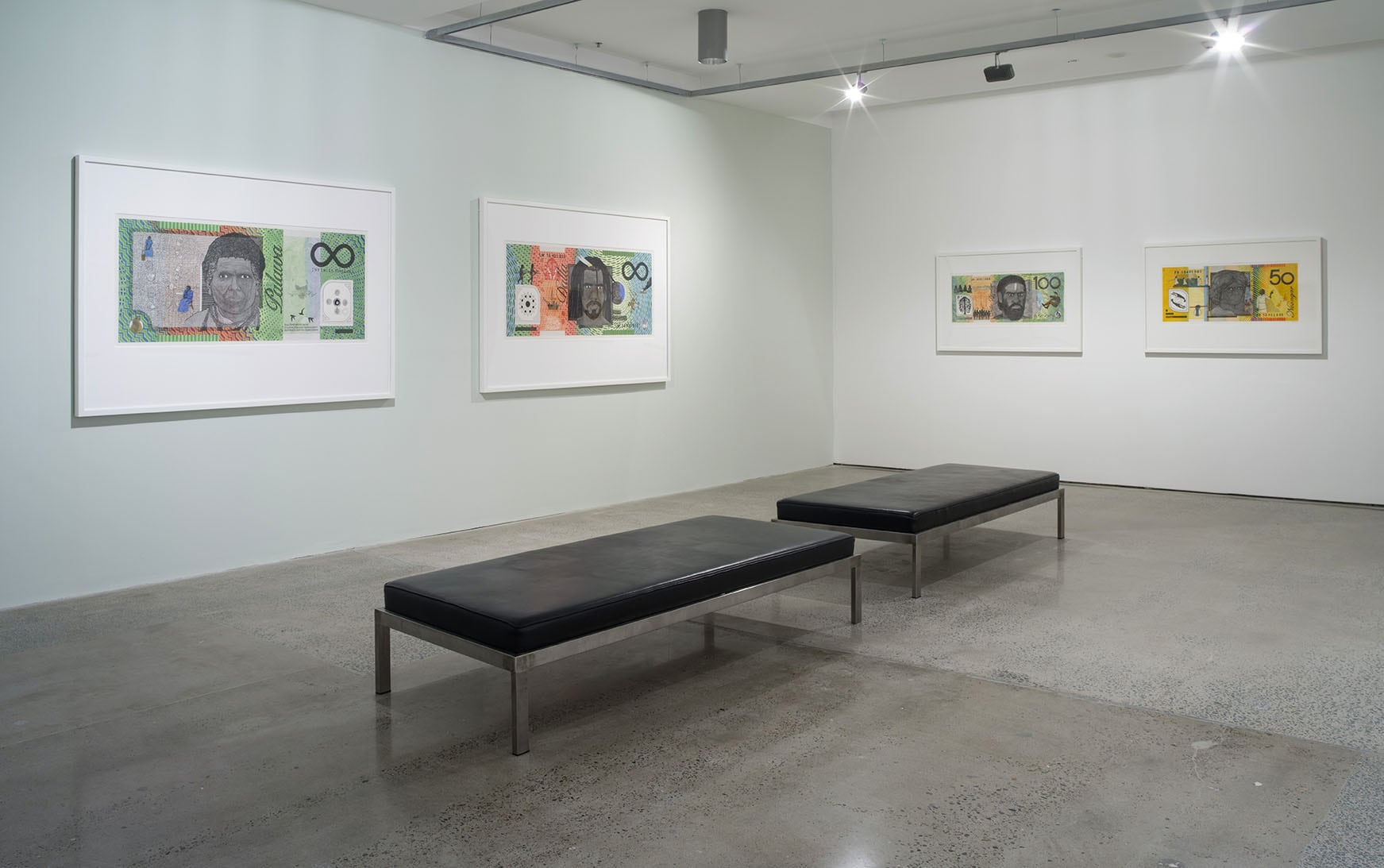
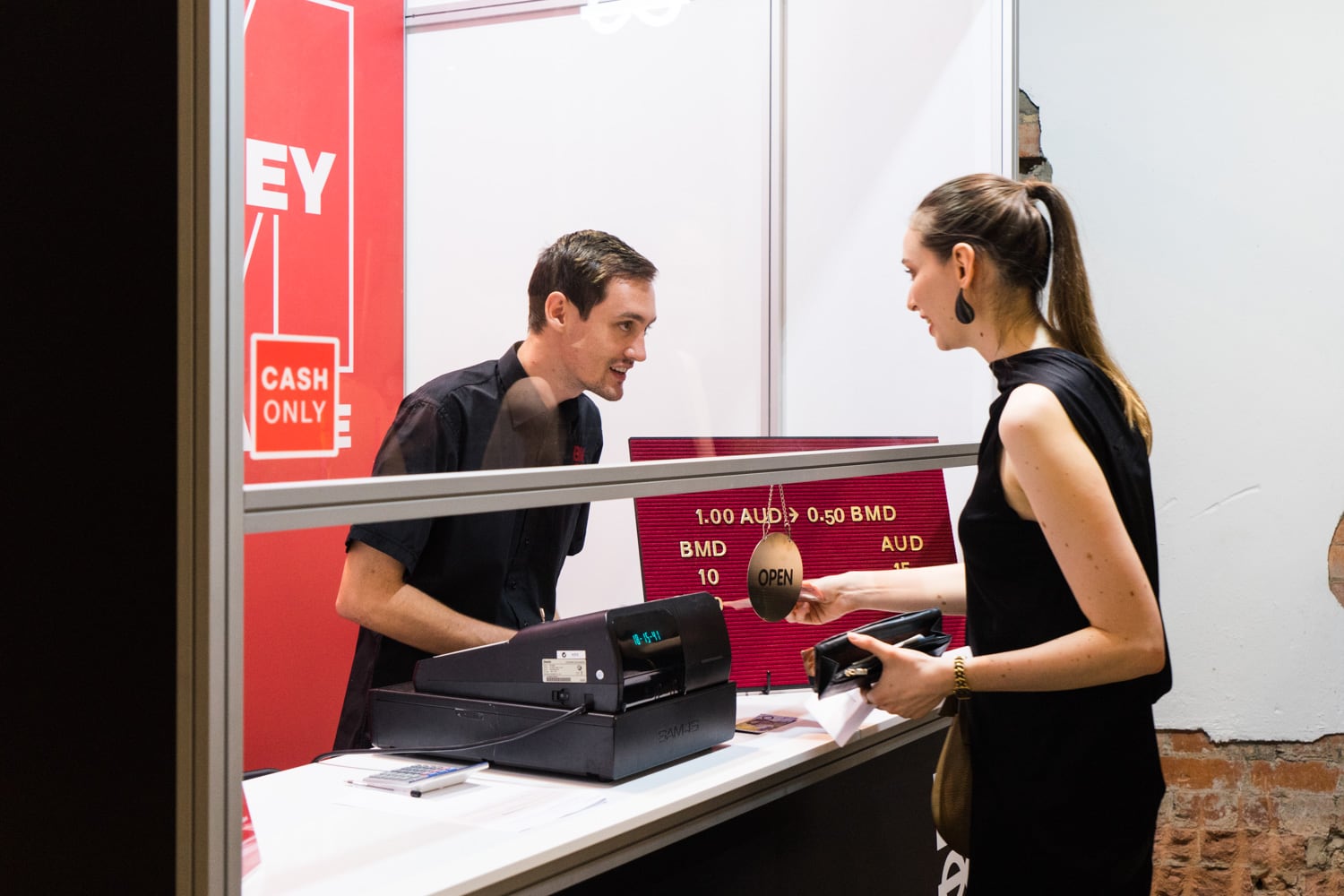
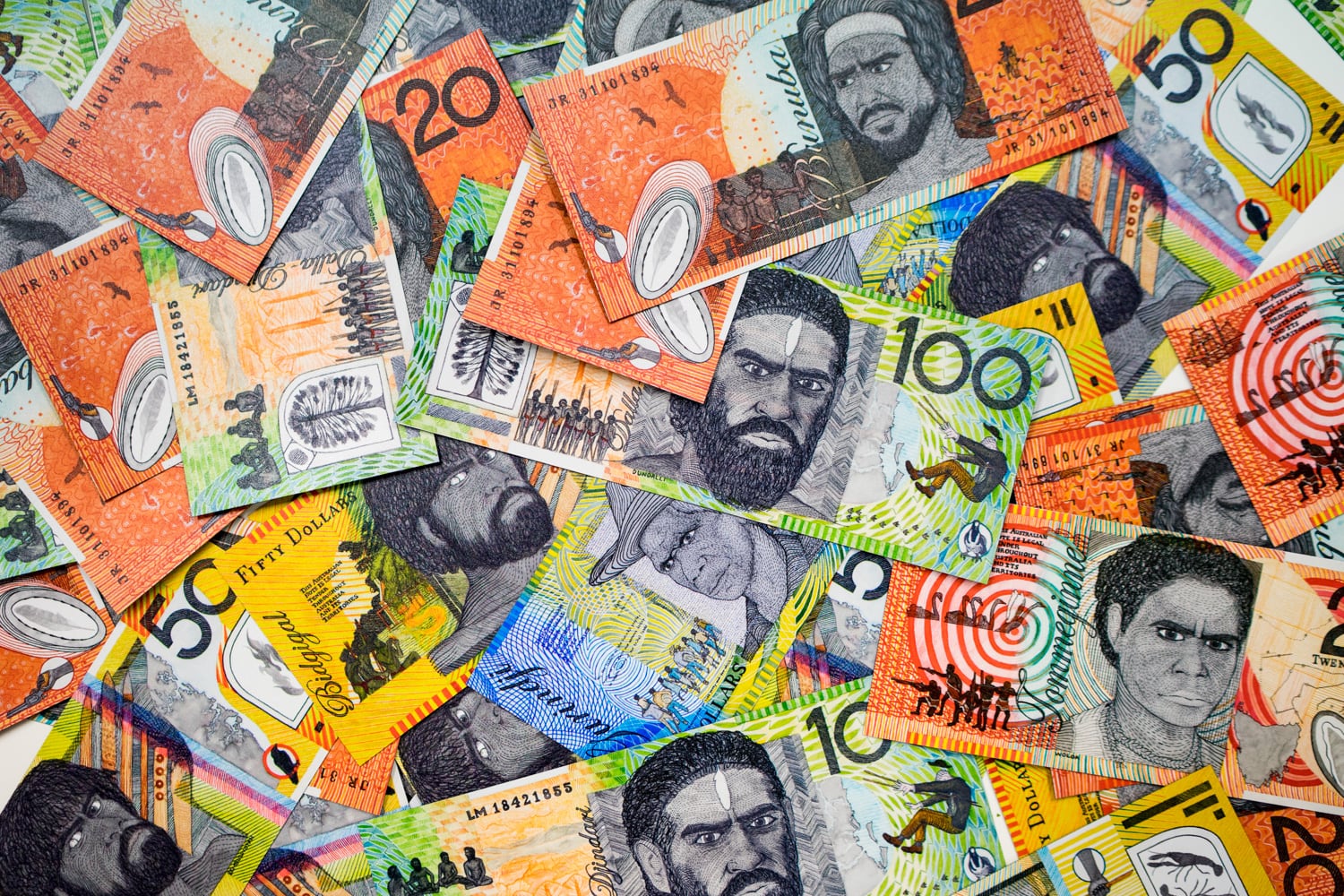
Artist: Ryan Presley
Curator: Madeleine King
Money passes through our hands every day, but do you look at what your fingers grasp and give? The representation of Australian people on our note currency is undeniably white despite having gone through various series of artworks since the Australian bank notes were first issued. In this time there have been only three Aboriginal people, all men, represented on the currency. The first was David Malangi whose artwork was stolen and placed on the one-dollar bill in 1966; later, in 1967, he was renumerated and acknowledged on the five-dollar note. The second was a non-descript Aboriginal man with Captain Cook peering down on him, a note to celebrate the 1988 Bicentennial. The third we have on our present day fifty dollar, Ngarrindjeri man David Unaipon. David (1872-1967) was a prolific inventor, writer and spokesperson for First Peoples rights. He patented a sheep shearer in 1909 and his research into flight, based off his knowledge of boomerang science, was released in 1914. He was one of the first Aboriginal people to be published and worked in First Peoples rights and science until his death at age ninety five.
One might say it’s ironic, or perhaps a convenient exclusion of truth, given the lack of equality (and mostly absence) of First Peoples representation on Australian currency – the tangible carrier of the economy. Considering how much capital First Peoples land has made for the nation in its colonised state and the hundreds of millions of dollars the Indigenous art market brings into the country, you might think we would have more representation. Wealth is at the core of what every country wants to achieve – business, trade and money underpin the foundations of all countries and Australia is no different, having traded on Aboriginal land, prospering from our knowledges and resources for nearly 250 years.
Reflecting on the state of the economic nation and First Peoples visibility is the recent solo exhibition Prosperity by Dr Ryan Presley at the Institute of Modern Art (IMA) Brisbane. The exhibition, which is Ryan’s post doctoral analysis of his Blood Money series, started in 2010, features the Blood Money series of highly detailed water coloured bank notes with Aboriginal people as the key figures, supersized and framed. Alongside this series is a participatory work where the public can purchase BMD – Blood Money currency – for Australian dollars from a very ‘authentic’ looking currency booth. All sales go to Aboriginal community services in Brisbane and the Northern Territory (NT), speaking to Ryan’s current base and community in Brisbane and his Ancestral ties to the Marri Ngarr family of NT. Assistant director at IMA, and the curator of this show, Madeleine King writes that the ‘two bodies of work explore different modes of representation and exchange that are central to the exhibition’.
I was excited to see this series and Ryan’s new Blood Money booth, having been a huge fan of his work for many years. His work is always incredibly nuanced with a rigour in research and detail, and I was not disappointed with this show. Walking in to the central room of the Blood Money series I saw many people totally enthralled in the works. I wondered if they were thinking the same as me, amazed at how the works unravel the histories I thought I knew, learning stories and wondering why these people aren’t known as the national heroes they are. These works raised big questions for me, not least the question of why our First Peoples heroes aren't on our currency or alongside (or replacing) the statues on the colonisers on our streets. Aboriginal freedom fighters, poets, land rights warriors and people on the frontier are celebrated in these works. We should all know of Yagan, Truganini, Vincent Lingiari, Oodgeroo Noonuccal, Wola, Fanny Baalbek Yoreel, Dundali, Fanny Cochran Smith and Bembulwoyan. These works are significant because they place Australia’s First Peoples at the centre of history and are a statement of our continued Sovereignty over land, culture and body.
Along with the Blood Money painted works, the interactive currency exchange is a powerful participatory experience that actively asked the audience to consider the history that is present on the currency and what kind of message First Peoples absence in this space sends. One would assume from our current state that Aboriginal people are in the historic past, that the nation building came from white Australia, the ones worthy of having their stories told. In the exchange of ‘real money’ for Blood Money you are choosing to invest outside of your own wealth or gain, and by virtue of its title, the artwork encourages analysis of this Nations’ dark histories and the wealth built off the land, and in many cases backs, of Blak Australia.
Ryan’s work not only shows a deep multi-layered approach to concept, but an impeccable attention to detail. The longer I looked and connected to the works the more detail began to show itself. They are respectful and thoroughly developed works that inspire truth and challenge ideologies of prosperity and what it means for the nation. Some might have wealth, and the nation has gained from Aboriginal land, but the First Peoples will always be the proud Sovereign Peoples. Prosperity will be restaged at the 2018 Melbourne Art Week in August. See it.
Kimberley Moulton is a Yorta Yorta writer and curator based in Narrm (Melbourne) and Senior Curator of South Eastern Aboriginal Collections at Museums Victoria.
